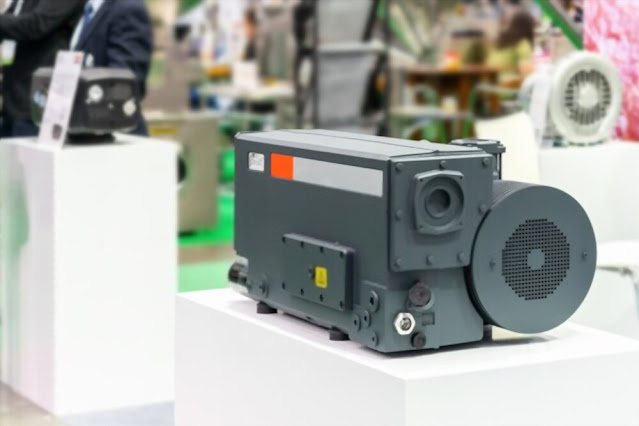How do Vacuum Pumps work?
A air pump has the inlet attached to at least one or both valve covers, sometimes the valley pan. It SUCKS the air from the engine, thus reducing the atmospheric pressure build up created by blow thanks to combustion gases going past the piston rings into the pan. Vacuum pumps vary within the amount of air volume (CFM) they will suck therefore the potential VACUUM a pump can create is restricted by the quantity of air it can flow (CFM). The exhaust from the air pump is shipped to a BREATHER tank with a filter on the highest , which is meant to retain any fluids (moisture, unspent fuel, air born oil) sucked from the engine. Exhaust air goes to the atmosphere thru the air cleaner .
In many cases, vacuum pumps are located directly on the plate , and are driven by the camshaft. Due to these “interfaces”, the engine repairer should have an elementary knowledge of vacuum pumps.
Vacuum pumps are utilized in automobiles during which the required vacuum can't be generated within the manifold . These are direct injection engines, turbo engines and engines with variable valve timing, for instance . The increasing number of pneumatic actuators also can render the utilization of a air pump necessary.
With pneumatic devices, high actuating forces are often achieved during a small installation space. Brake boosters, secondary air valves, EGR valves, switched intake manifolds, turbocharger control and luxury devices are just a few examples.
Since failure of the brake boosters can cause dangerous situations, the air pump is taken into account to be a security component.
Vacuum pumps are categorized by their operating pressure range and intrinsically are classified as primary pumps, booster pumps or secondary pumps. Within each pressure range are several different pump types, each employing a special technology, and each with some unique advantages in regard to pressure capacity, flow rate, cost and maintenance requirements.
Regardless of their design, the basic principle of operation is the same. The air pump functions by removing the molecules of air and other gases from the chamber (or from the outlet side of a better air pump if connected in series). While the pressure within the chamber is reduced, removing additional molecules becomes exponentially harder to get rid of . As a result, an industrial vacuum system (Fig. 1) must be able to operate over a portion of an extraordinarily large pressure range, typically varying from 1 to 10-6 Torr of pressure. In research and scientific applications, this is often extended to 10-9 Torr or lower. In order to accomplish this, several different sorts of pumps are utilized in a typical system, each covering some of the pressure range, and operating serial sometimes .
The various sorts of vacuum pumps are briefly described here but a more detailed discussion of every is required to completely understand the benefits and limitations of every technology.
Vacuum pumps are one among , if not the foremost important set of components supplied on vacuum furnaces. The processes we run and the quality we achieve is a function of how these systems perform.





Comments
Post a Comment